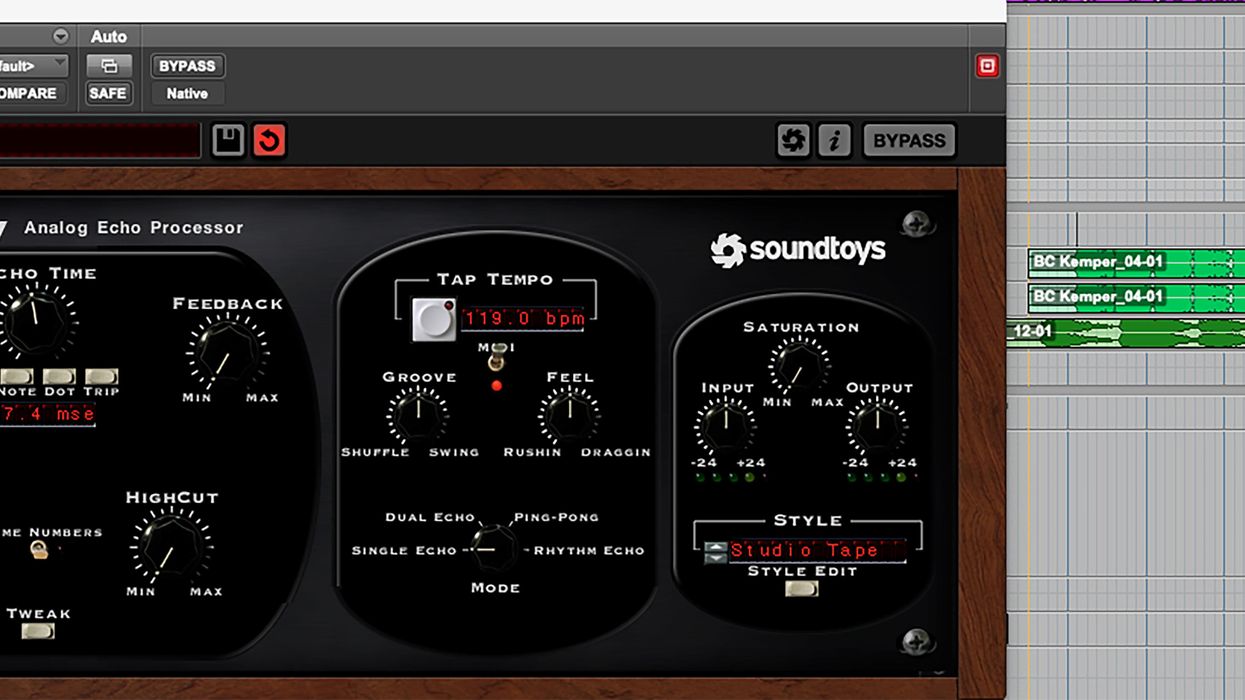Welcome back to the Dojo! This month I'm going to explain the Haas effect and how to use it on exposed parts (like your solo) and get it sounding wider than your speakers! I call it the "Haas Solo Effect"—a pun in tribute to my lifelong love of Star Wars. Tighten up your belts, we're going to throw around galactic-size audio. The Dojo is now open.
In 1949, Dr. Helmut Haas discovered a curious psychoacoustic phenomenon based on how our brains perceive the directionality of sound (also known as the "precedence effect"). This is based on what acousticians call HRTF (head-related transfer function), and it has everything to do with the time it takes for a sound wave to reach one ear and then the other ear that is the furthest away from the sound source. The longer the time, the more "hard panned" the sound becomes.
Try this: close your eyes, snap your finger at arm's length in front of you. The sound waves are reaching your ears at roughly the same time and your brain interprets this sound location as center (or directly in front of you). Now, do the same thing with your arm out to the side. Depending on which arm you used, the sound is either hard left or hard right. The last component to mention here is intensity (aka loudness). Obviously, the sound has greater intensity to the ear closest to the sound source and less so for the other ear. This makes up the two components we use to determine the directionality of sound: intensity (loudness) and timing (HRTF).
We can take advantage of this in our audio recordings—morphing a simple mono track to make it sound stereo, and then stretch it even wider. Try this on your lead vocal, guitar solo, or any mono track. Just be careful not to do this on every track, otherwise you'll get what I call "Big Mono," and nothing sounds like it's in stereo anymore. For our purposes, we're going to do this with a guitar solo.
"We can take advantage of this in our audio recordings—morphing a simple mono track to make it sound stereo, and then stretch it even wider."
Find your mono recorded guitar solo in your DAW session. Now duplicate it. Take the original and pan it hard left, and then pan the duplicate hard right. On the duplicate track, instantiate a delay [Fig. 1]. I'm using Soundtoys EchoBoy ($199 street), but any delay plug-in will work. Set the mix control to 100 percent wet. If it isn't already, set your delay time to milliseconds. For the Haas effect to work best, you can adjust the delay time anywhere between 1 and 40 milliseconds. (I used 27.4 ms in this case.) If you go over 40 milliseconds, you will gradually lose the ability to perceive the solo as one wide sound and you'll start hearing the duplicate track as a simple delay of the original, panned hard right.
To make sure it's working, bypass the delay altogether and listen to how everything immediately collapses back into the center of the stereo field, even though both tracks are panned hard left and right. Play around with the delay time of the duplicate track until you get it right where you want it.
Depending on what plug-in you choose, you may be able to score some Jedi bonus points here by playing around with other parameters. One thing I like to do is adjust the modulation properties of the delay (wow, flutter), which adds some analog tape artifacts. I'll also adjust the bit rate to give it a more lo-fi, bit-crushed kind of vibe. Waves H-Delay and, for the truly obsessed, FabFilter's Timeless, are good choices.
One last thing to add to your skill set: Remember the intensity component? I like playing with this one as well. Especially when I violate the Haas effect and go above 40 ms. When I do this, I can make it sound like the solo moves behind the beat and comes back into time in cool ways.
I did this on a song I wrote called "Making the Faith" on my new album Madrigals for Mongrels (coming soon). I used some choice lines from James Joyce's Finnegans Wake and peppered them in between guitar solos. You're welcome to come by my website, bryanclarkmusic.com, to hear it in action even before the album is released.
Until next time, stay creative, healthy, and keep experimenting. Namaste.













